Brief Note On Fowler, Cosgrove and Torset
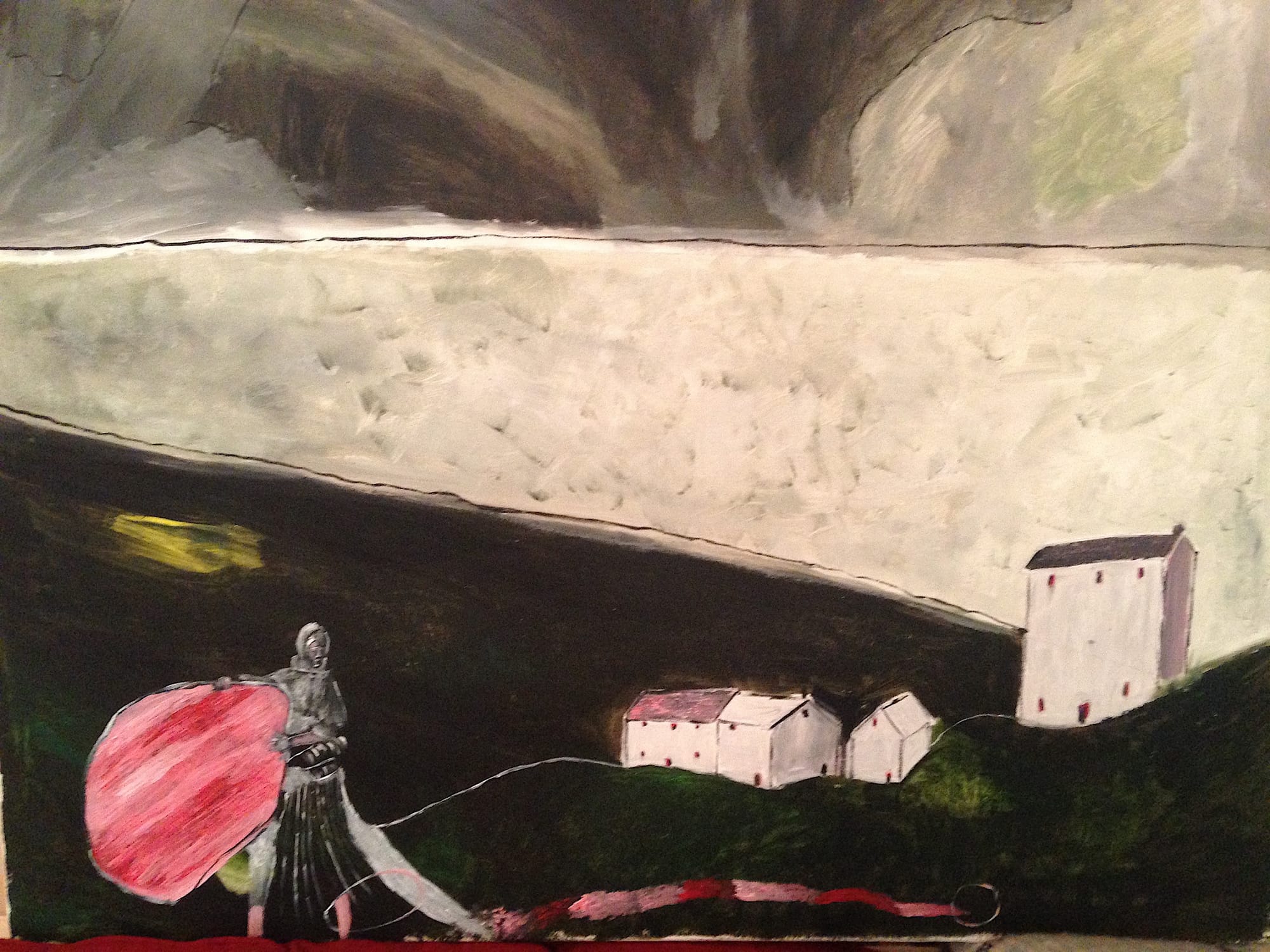
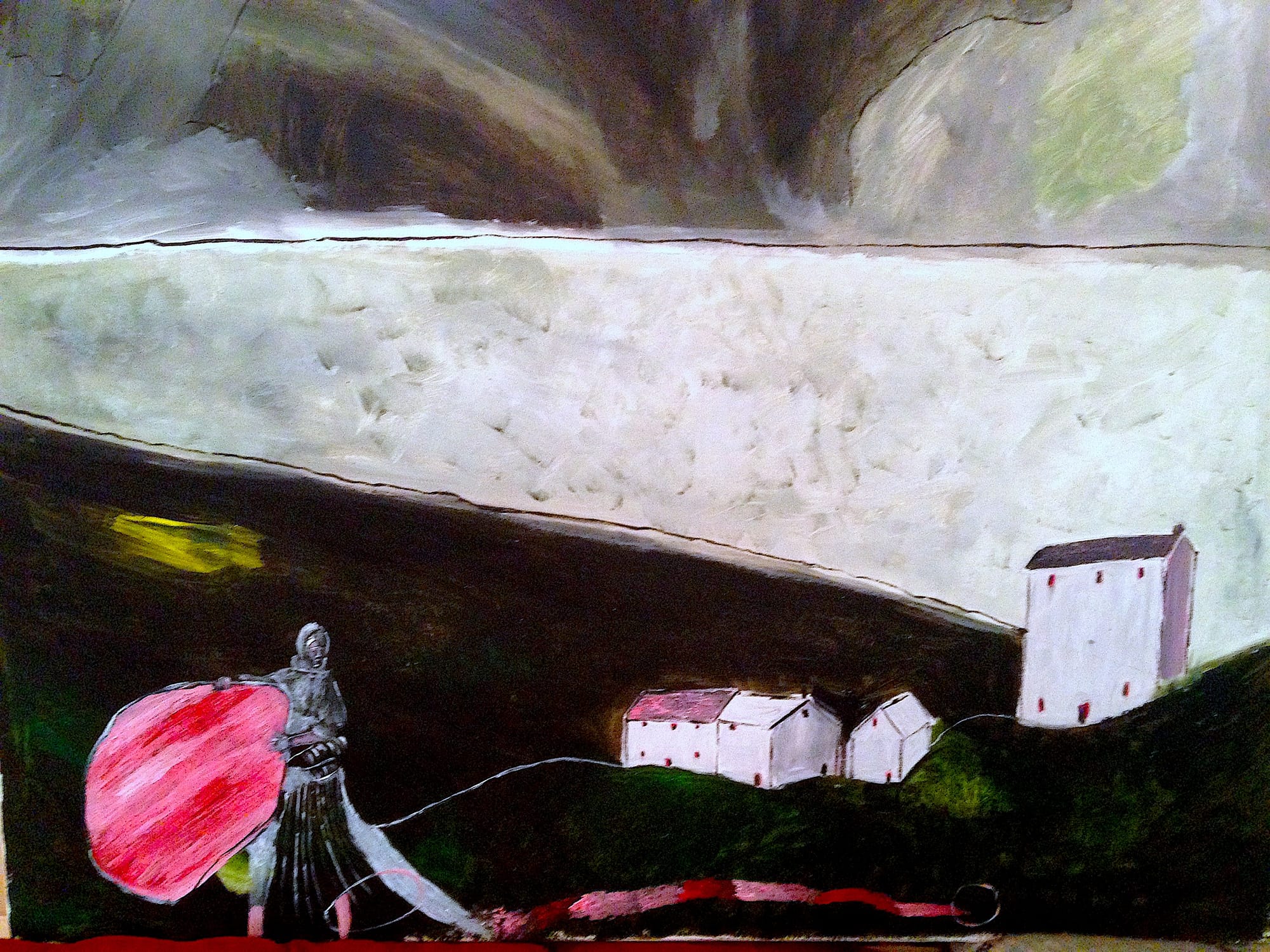
‘… attempt to tie down the dithering generalizations of Romanticism and turn them into equations worthy of deliberation.’ (Graham Robb).
So here’s a short aside on three contemporary poets through the prism of Robb’s insight made when reflecting on Mallarmé’s statements about poetic language. The three poets are working to link the high flown to the ground using bits and pieces – words sure, but also stuff and performance and lacerations of constrained postulates. They might be humorously characterized as boisterous pre and ante textual presences. All are within the invisible high pressure atmosphere of Poem Brut, a London based but international poetry movement inaugurated by SJ Fowler. This is where, say, the swan becomes a haggard falcon. The haggard falcon cannot be tamed, or is decapitated or as virtual as the embryo in the egg, the woman’s hand or the sails of a mast. It finds no partner in that it sheds artistic trappings and deceits. Or finds new deceits, other trappings. In this cosmos usual orders are reversed.
The humble origin is the end bred from the upper air, constellations and spiritual space. There is a furious noise involved, and brains working in transparent silence. You don’t even get to anything like an ambiguity or mistake and their drama provides nothing for the definitive paraphrase. They interweave and connote but hand in hand to the clutch of chance rather than arrows of literary or (broader) artistic fortune. You watch the pages with the unsettling suspicion that what look like words aren’t, and that the lacunae left to us has already been filled before anything even happened.
The first thought is that what they’re doing is a confidence trick and the next is that we’re dishonest and have improbable integrity. The third is the crooked finger getting pointed right back to the observing mind. Doubt becomes a sort of fertile guilt and dismay, futile and sterile. You watch and read and listen in and there’s a curve into a solitary virtual birth. The bed of poetry your conventional expectation seeks is absent and intimations of mortality eclipse any sense of sunrise. The perfect rigid frame of those old habits are left staggering around as symbols of death and emptiness. It’s a new form of the sublime and is how art can focus on what’s cancelled. This is difficult and complicated art. The poets hover eccentrically around ordinarily solid figures of speech and behaviour. They perform an image of writing that probes whilst remaining spirals of periphrastic and obscure transparencies. They confront a hostile world by posing the book in the book, the poem in the poem, the object in the object, the form in the form, the life in the life and on and on like everything they do are versions of burial grounds where, nevertheless, something hopeful is about to happen.
Poet, audience and work self identify like a halo surrounding the reading head and the edges of the pages in a dark room at midnight. What is extended is the notion of a page and of a drama and of a voice and of their silence and noise. Everything they offer is the veil. What is covered? Whatever wakes up. But often just whatever breaks down and fails to begin at all. In this they’re sounding boxes of a musical instrument –or wombs. Their dramas all break down any provisional artistic optimism and so there’s a helplessness expressed directly in counter-images, lurking convictions that transcendent values are lost or that discourse about a discourse that can’t exist is just a nasty infectious malaise. The sheer naked engagement with this as the basal ground of poetry makes them consummate and necessary and urgent for these dark times.
Why don’t they offer anything more than just the possibility, that notion of ‘I can’t go on, I go on,’ so familiar and almost a cliché in Beckett? Well, they all place limits (in very different ways) on poetry. All they can do is present the starting point of the activity. They provide oblique literal and allegorical structures so attempts are suggested but not directly described, whilst what we are given seem like rehearsals of those terrible, obscure initial conditions. So there are mysteries but never directly expressed. We’re forced into a condition of enjoyable exasperation like we’ve been seduced, refused and offered no consolation and all we do is scream and agonise over what might have been alone. It’s a heady, unmissable show.
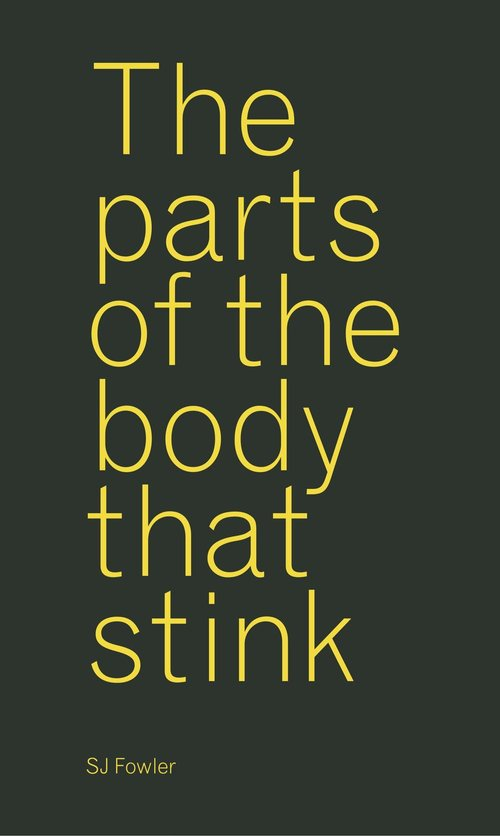
SJ Fowler
His material is placed in a symbolic relation to the subject of literature, maybe poetry even. It is not symbolism as such but more a kind of analogy to transcendent value. There’s little more than the hope that a synthesis will be achieved, or at least, approached. What happens is the satisfaction of perceiving a thin allegorical drama advanced as aura. What is depicted then? Not the thing itself so much as the effect. His figures and shapes and physical complications and exaggerations are strange ranges of recognition done outside the need to communicate. He has a single way that doubles words. Sometimes erases them. Most of the things are peculiar to him, but at times there are conventional things to drawn on. But there are always structures and so we can read, listen, see these as a weird anthropological and psycholinguistic twisting. His is a twelve-bar blues and reggae and primal done inside origins of cosmic harmony.
Well now, what gets reactivated are the mysterious aspects. These lie even in decorations of fancy prose. That makes sure we notice that language here is organic with its own internal logic as distinctive from meanings and sharing. This is play understood as that cognition that’s neither trapped nor freed but held in an unsustainable equilibrium. Everything is constant. He couldn’t care what you make of it in terms of exchange. If these are symbols there is no indication of a single reference. Images are abstract patterns he finds in the objective universe. Whew. There’s always a dialectically perceptible unity in the elements. These are indicated and indicted by the world itself. And the raw smashed psyche. Sometimes all there is is phonetic difference. But of course sometimes there’s no sound. Then we have visuals reminding us that we live with visual antibodies.
Concrete dimensions. This is a principle delight for Fowler. Increasingly so it seems. What he makes are those strange visual coincidences that suggest the vista of visual mementos. But often the visual and the aural find their similarities and he has contrasting devices using sounds drawn to the eye. This unity is no less a unity than that found in a conventional sonnet. He has quatrains phonetically and graphically arranged and picked up in the body. His performances are repeated internally across, within and then expelled from his physical rhymes. There are thus enormous harmonies and his own desire to generate the musical accompaniment in what to the first glance might first occur as willy-nilly.
There is of course a sense of gigantic alarm: what is it when we confront these synthetic acts except us left clutching at straws? Coherence is there but ready to be replaced by this equation: as vivid as they are obscure. This is unsettling to the ‘reader’/’audience’ used to meaning and being served. Fowler asks us to do two things: recognize what’s been undermined and then relish it. It can be clumsy at times when compared to what we might understand as the classical poet and their poetry. But Fowler drills to the mysterious correlations between the structure of his material and the universe. The retreat to musicality and Verlaine’s imprecision is the default move when the classical poet is reimagined. Fowler is original and resists that spoonful of sugar and panacea. Sheer nonsense is no problem once vivid is construed as a formal feature and real connection.
Hence Fowler points to the ‘vivids’ that are solid grounds for marrying what in the old days might be construed as rhyme and reason. His vivids – words, actions, pictures – dramatically brings together recognizable structures and the required drift. What happens. The reader/audience attends differently. The rich nuance comes just as Baudelaire defined rhymes: ‘ lanterns lighting to the path of idea.’ Fowler does everything as if on the crest of a wave. His stuff is poetic affluence. He seals unity whilst pulling the wool over our eyes. How? By reminding us of eternal circumstances. His work presents us with a microcosm, molecules of the structures. It’s why at times you sense a kind of primal scream, an entangled derangement that’s all about how he shepherds the elements. Here’s an image for this: think the animals two by two coaxed into the Ark. The flood’s coming and some primordial issue is being revealed.
In Fowler’s most zany and fragmentary mode there’s a gesture towards memories of older rhymes and allusions towards mysteries of a lost past or rather a hidden present. In this sense he’s offering souvenirs. He harks back and harkens. There are earlier words that are not words. Poetry is a kind of sheep dip. There’s not a label of anything, but maybe just labels. He references things that go back to a previous dispensation, an earlier word. If it seems random then Fowler isn’t too worried about the integrity of an author per se. Maybe its inevitable and necessary. See it like this: he’s finding things and arranging things against randomness and a subterranean incantatory unity allows a glimpse of something ideal and summed up, simplified and impersonally structured. The great universe is irony and real and where we are outside any commercial meaning. But its human, recognizably so, in the figure of the poet working the same collective structures of prosody, alphabets, colour schemes, sound magic and choreography.
His mysteries are of a piece with those of his great apes and boxers. Both apes and boxers find value in the process proceeding their existence. Images and sounds seal them. They are rich and forging negative connotations of the poetic games of, once more, Baudelaire. The games and techniques gather metaphorical value. What was antiquated and clunky now annihilates the reality of the jungle or the ring used as a pretext and nod now to evoke a world that’s pure and an idea and real. This is a type of magic, and Fowler’s is monumentalism and evanescence and engorged. His sheer quantity is reckless but requires no answer. He’s reevaluated the dreary verse games of the poets who block out pitch perfect formulas. He finds them of importance both dramatically and philosophically.
Really? It seems not. But he’s aware that if he’s flippant and transcending them its because he knows he can compete with their dénouements. He is placing the rivals in a sort of parenthesis. If he finds them risible its because he is infuriated by their perfections. When the Sex Pistols sneered at the Stones it was because they recognized where they were standing. Fowler adopts a similarly sardonic distance and his frivolity has a different purpose because intensity is its subject. I called it ‘vivid’ earlier and is equivalent to Mallarme’s ‘luxe’, ‘preuve’ and the ‘deux a deux’. His allegoric movements and dramas represent verse and the white of a page or the stage and its harsh lights.
Perhaps one way to think about Fowler is in terms of topography. There is space rather than time, so a sense of expansion over something stuck fast. The pieces work like the wriggling trapped animal. The swan in ice. The suffocating sheet. Why put it like that? To find a way of distancing him from the Romantic notions of flight and flying away and time. Romantics are young. Fowler is of course young but in these terms a heretic. He’s also melodramatic and an extreme case. We’re never in the best seat to watch and listen or read. In this everything he does is a parody of performance because he doesn’t care that we miss. But this isn’t the same as not caring about there being something worth while to miss. Anyone who has watched his performances and the way he herds his fellow Poem Brutists knows this is someone intensifying the connections between performance and audience with a knowledge that many others frankly don't understand.
He is skillful and combines his knowledge with the strict rules of tense humour, parodic abstraction and vertiginous slap-stick. He knows what the difficult task is of facing each one of his poems. He draws attention to this by doing what he does. It’s a kind foregrounding that reminds us of what is forgotten and erases what is always remembered. Sometimes what flies is uglier and messier than what was there before, but at least its now flying.
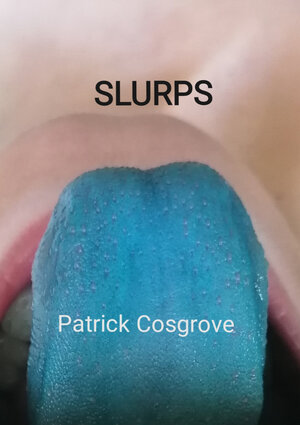
Patrick Cosgrove
Cosgrove is wordless. His mode is visual similarity and a new type of organization. His monsters straddle worlds, from the Ark to rhymless lonely word flesh. It’s a desperate strategy that elides with shock tactic and Saussurean free gift you want to give back. And wish you'd never seen. But there are deep compensatory internal echoes. He works out mysterious laws that threaten to break into the arbitrary usurpation of metaphysics and the irreplaceable grossness of possibility. There is nothing less than a mystical biological form without bonds in his work. If it's a conjuring trick it contains the illicit conclusion, the sneezed flex of metaphors stretching horrible forms between two distinct realities, both of which are ours.
What worlds? The one of all things under the sun. The other, that of the nudes that scare, divert and derange us. It’s curious and a reproach. What he produces are the most powerful puns. These are irruptions that emerge and are superior and uneasy. At a very basic level there’s always a certain abstract, intellectual yet visceral excitement. By the time he’s reaching the end of the first part of any construction we have all been thinking of our sexual degeneration and let violent thoughts preside. And the strangeness is more than often awkward, exotic, erotic and outstrips initial contentments. In a way we worry about whether there is any larger picture. Cosgrave is frightening away those who take for granted a ban on promiscuity and incest. He is recombining stuff. Visually we witness the evolving prosodic and metaphysical grotesque. If rhyme is a coupling then Cosgrove is showing what lives in the hinterland of those coital consumations.
His strange forms resist partners. They are impossible monsters, examples of the isolated antic atmosphere. His creations recount their own creation in detailed manner and drama. Aragon’s machines of thought spring to mind stripped of logic and meaning. What is Cosgrove making clear? Well, one thing is the isolation of disgust and beauty. And in so doing their intimacy. The reflexivity of the poet and the literal technology that accounts for its chances taken. The sheer abstracted forms dwelling inside the brute physical terrorism of each manifestation. The nonsense and humour in what end runs round official existence. Official existence? What I mean is whatever is often taken to be the poetic - and also living. Cosgrove contains whatever that is and then makes whatever it is impossible. He works to eat away at any capacity to refer to things, or to imitate that function, even – but in eating he’s cannibalistic.
But that’s not true because everything he does has an allegoric sense. What is he doing? Well, a little of it hums as an allegory of poetry. It depends paradoxically on the tedious and mechanical aspect of that, and all those good-looking sexy verses of a self important Olympus. He’s Vulcan sperming up on the Alien spaceship and what we have is Conrad and Heart of Darkness and all that hallucinatory smeared materiality. Cosgrove is an act of insane drama. With always a sequence of premise making. First scenarios of quick and facile recognition collapse to uncertainty and penultimately to a horrified, horrifying despair. The final scene is its own implied destruction. Whatever the subject is, it’s sent back to its seat amongst other leaking instruments. All the parts are treated as from elsewhere, sleepers about to be woken up into an extraordinary nightmare. Are they brutal paraphrases? But then we’d need to know exactly what was the target.
Suspicion and antagonism always come with art. It’s a manner of reading with 3-D spectacles rather than a picture-postcard. There are five ambiguities (at the very least) that are crushed and left for dead. The first is when he tweaks the material and doesn’t go back to that moment so it’s silenced. The original thought is never reactivated but holds an aura as Cosgrave builds like a raving professor, and so this ambiguity is maniacal nostalgia ending in a slit gargling throat or an oozing between the legs. The second is the persistent ambiguity that is weakened but survives first impressions. There’s always a sense of disconnected units and an original possibility guessed and lingering. Thirdly there’s the very intrinsic ambiguity of the object which is obvious given as we see the very structure of the object and it can’t be missed. And what that is is the frustrated space where liminality is nothing more than itself being confirmed. Fourthly there’s the mystery of the lost object and so the ambiguity resides in whatever may be thought of the intentions, chance or private fantasies driving the thing in a Platonic horror realm. Suppressing this ambiguity is never fruitful. Finally there’s the universal ambiguity of resisting treating the made thing as a graphic flag pole. This is when we decide from the get go to not treat anything Cosgrove gives without attaching it to an extraneous theory.
Cosgrove builds a reality that erodes reality. He doesn’t name anything he builds. Adolescents obsessively write out the names of their desires. Cosgrove is erasing this process. Signifiers conventionally outlast the signified. In this way we might understand Cosgrave as denying the indeterminate lifespan of arts’ things. It’s like he’s saying: we all die and that should be that. No ghosts. No second acts. The mediocrity and hum drum nature of his materials contrasts with the brilliantly complex transpositions he enacts. It’s concrete and abstract, nameless like a frothy and impalpable reality scattered into the mundane elements so that sexual and spiritual delicate spectacles enact themselves in strangeness that will contain the trivial as annihilation, the monstrous, the pathetic fallacy and that almost nothingness of his horrors, all of which are what he takes as poetry and the apparent subject.
Something is very wound up in this, and many things are attached, but all traces of reality are erased into some demented hieroglyphic other elsewhere nowhere dimension. Let’s be honest, this is very disturbing and what decadence might look like in these hyper-real days. What comes to mind is the notion of instinct. These things seem like short-circuits to that. Diagrams. There’s a lot of intuition going on that is suppressed and repressed and then gets dazzled up. The visible Cosgrove organising his material digests his raw material and the process is like terraformation and is organic and orgasmic rather than engineered. It happens again and again in a profitable confusion of distinctions that seem to be recurring motifs. Think of his work as souvenirs of explicit transience, a double hiatus and vivacious hypothetical pornography. It’s an onamastic game – the investigation of a name – where the name is as secretive and negative as lipstick traces on the wrong object.
Cosgrave creates still life as sexual object with somber connotation and absence attached. It’s like he’s inventing alien life forms for us and has lost the warnings.
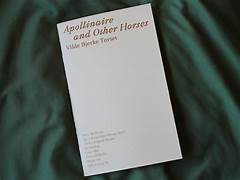
Vilde Torset
In her poetry something necessarily doesn’t exist. This will be her taut subject matter and urgent warning. What a reader can’t decide is whether it’s the objects she names or the idea of these objects that makes clear the ostentation. Well what you sense is that she’s keeping an eye on this, and resisting the temptation to conjure up an imaginary nothing out of something. She does it out of nothing. So there’s a way everything becomes a final image, a last word which happens when the poet iterates and lets whatever the subject is expire. Often this gets characterized as irony.
But with Torset she’s exploiting – or making up – a kind of aesthetic error to control the absences. So now what we read is something that may or may not be absent, but the process is present and that matters. That is the matter. What is important is the noun and the name. Face this fact: her nouns often refer to something uncreated and an event that does not occur, or is never just created once, or an event that doesn’t just occur once. So what is she burying in the body of the poem? Well, maybe the absent stalk of the poem, the willful strange disappearances or more likely the fictional poet herself. Her poems become the actors. She takes the hard news of poems as suicide from cloud to silver lining. Well nevertheless that remains a dark and heavy figure to read back into poetry that is essentially figurative density played out as dominant coherent patterns.
The humour is a turbulence ingrained into the tone or mood. Her images – flight, closure, horses, silence and all sorts of magic and its beasts – are masks she wears folded out or closed. When she performs with, for example, a horse head over her own, her voice is small and a frozen surface of ridiculous transparency. It is a dream and an agony and a corpse talking in ‘a caboodle of oblivion’ as Grahame Robb somewhere describes Mallarme and his ‘blanche agonie’. It’s both distressing and curious. So what this means is that in Torset messages are relayed in different directions.
There’s a kind of repressed depression about her work, countered by determining a real point at the very centre of the universe. It’s from here readings spin off into orbits. Mind you, the other way is also a possibility, where we can read and read out into a chaos of intertexual space. What is havering about is a sarcastic nuance and ambivalence shimmering as sorcery. One way of reading is to read them each as recipes of alchemical mysteries, the hieroglyphics of scared meanings carved into liminal stone. So what we have is obscurity, closure, secrecy and neglect staring back with hard eyes at what’s contained and overflowing from any single word. Her ambivalent minimalism is that of a Beckett dismayed by any hint of reducing it to mere tedious and tendentious game playing. One way out – Beckett’s choice – is to pretend to be what critics take it to be.
Thus it is that Torset is that fee-fi-fo poet who wings it by being the poetic act. Her poetry resists the infinities of, say, a Wagnerian totality approach. Hers is finite, blatant, absurd, funny, strange, physical and a dilemma. What’s interesting is the contrast between the catastrophes that seem to plummet into the poetry from the sky and the exploding silence of its range. What does that mean? The content is nearly always a truncated disaster – or many – and the alleviating humour of the gallows. (So far, so Beckett!) But there’s also a small air she creates that offers something more halting and cautious and distant. Her moments are incubations of both tragedy and inconsequence. There are the bones of fables scattered everywhere and the uncertain location creates an atmosphere that is teasing and emotionally entangled. These are dark pleasures even when we find affinities and pathways and we’re grinning.
We grin a lot with this stuff. Erudition can kill as can speculation. But some birds sing as they die. It’s never a straight line. Raw material might also die into obscurity. And when it does, if it does, the skillful makes each a new starting point. Lazarus poetry. Some interpretations are just digging up soil. Torset has questions she answers in her poems and her performances but god only knows the questions. Her elaborate dysfunctional materials are not subtle clues but the only verifiable truths. The confusion between poet and animal – nature even, say, - is no less than a rapport between structures and existence played out as prosodic peculiarity.
This is how we might understand a soul as dying with the body rather than rising up out of it. Torset resets our conclusions about poetry and reasserts them as futile totalities. No hazy transcendental uplift. No immortal emigration. These are fireworks. They appear and disappear. Are wonders.
Conclusion
I haven’t quoted any poem nor performance and have given fewer details. As such, it might be that these asides are not much at all, and there’s little to be salvaged. So? Take this as the necessary avoidance of a close prosodic reading and more an expression of the very game they’re playing, the show they’re putting on. Ok, so maybe there are three functions for this kind of ‘essay.’
Firstly, it’s an example of the sleight of hand that seems to be what no one seems to think art has any business with but is its essential engine. Secondly it’s just another invisible remnant of the attempt to eradicate the subject matter of representational art – read it as the skillfully burned cigar. Finally it’s a piece of writing that’s more than the abolition of reality but rather one that implies its own disappearance. I’m purifying literariness. A case of what Robb captures as ‘… abstractive criticism … forced to work against the grain and do the dusting in reverse, restoring the ash of reality to the surface…’ He actually said, ‘… to the surface of the page’ but I think mine has to find its sacrifice before the confirmation of the page, in keeping with its subject matter.